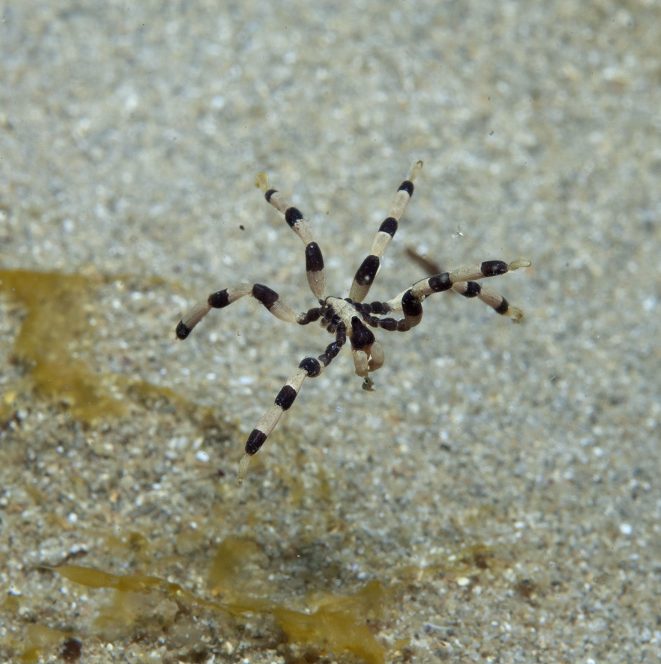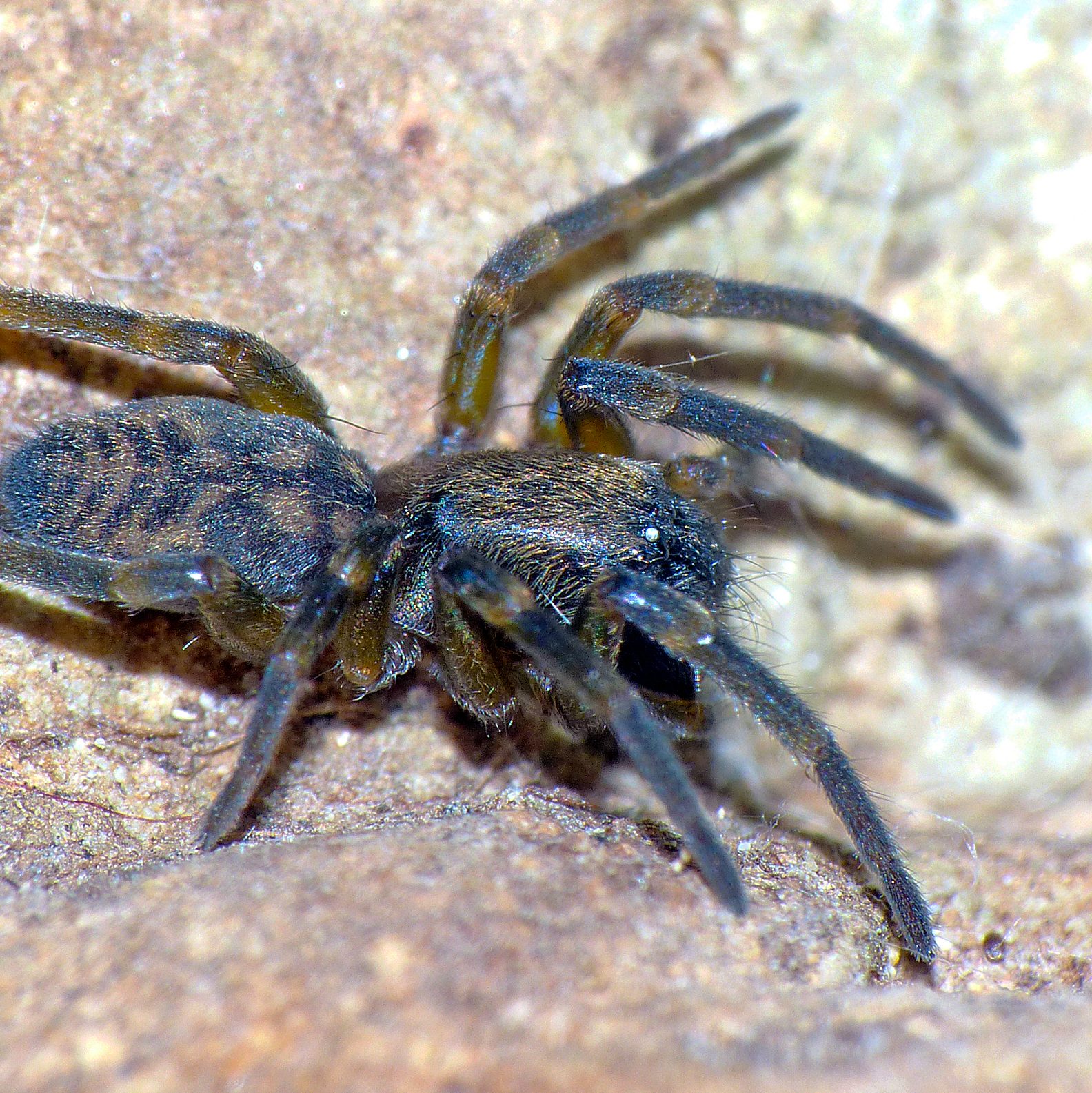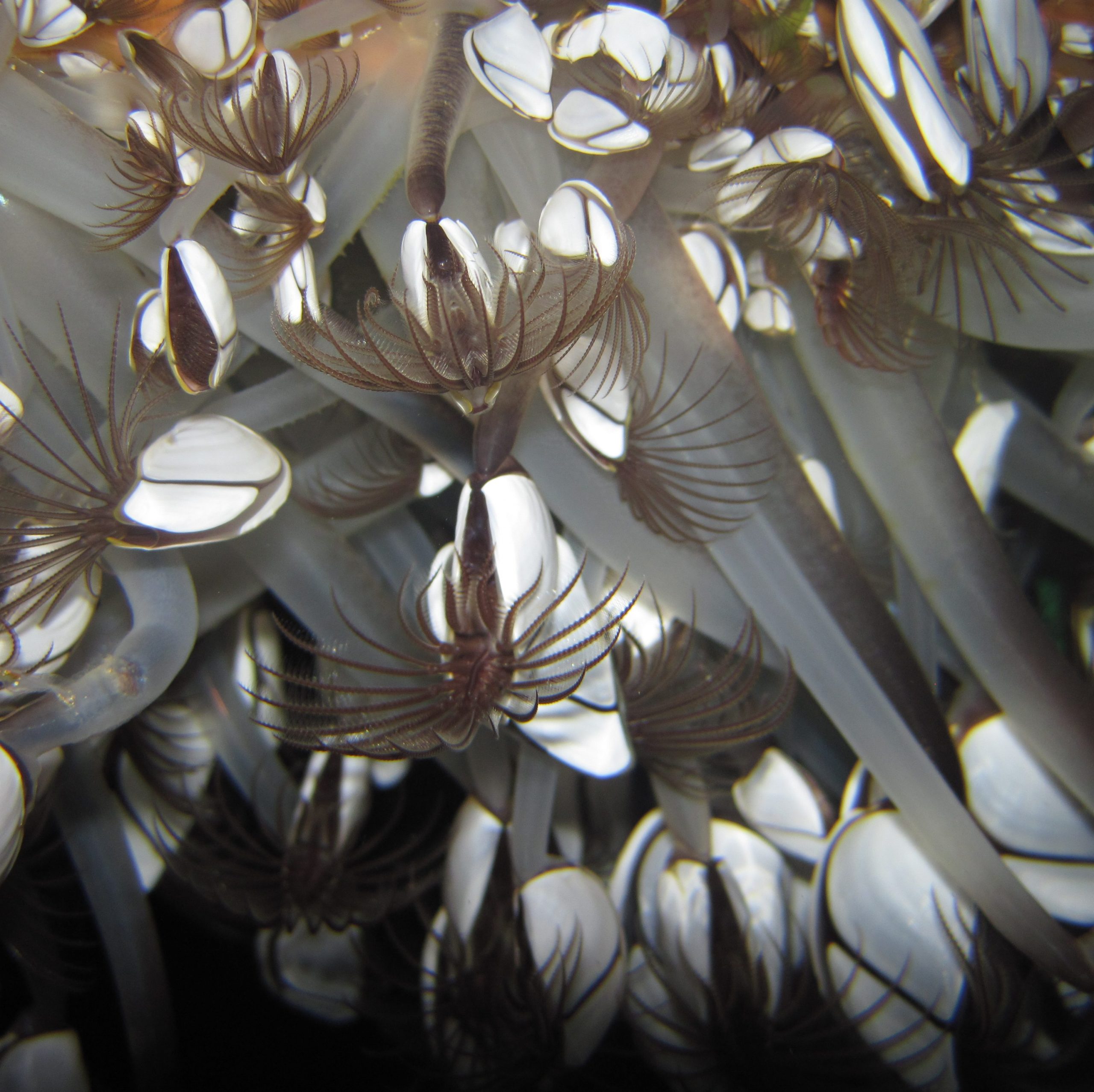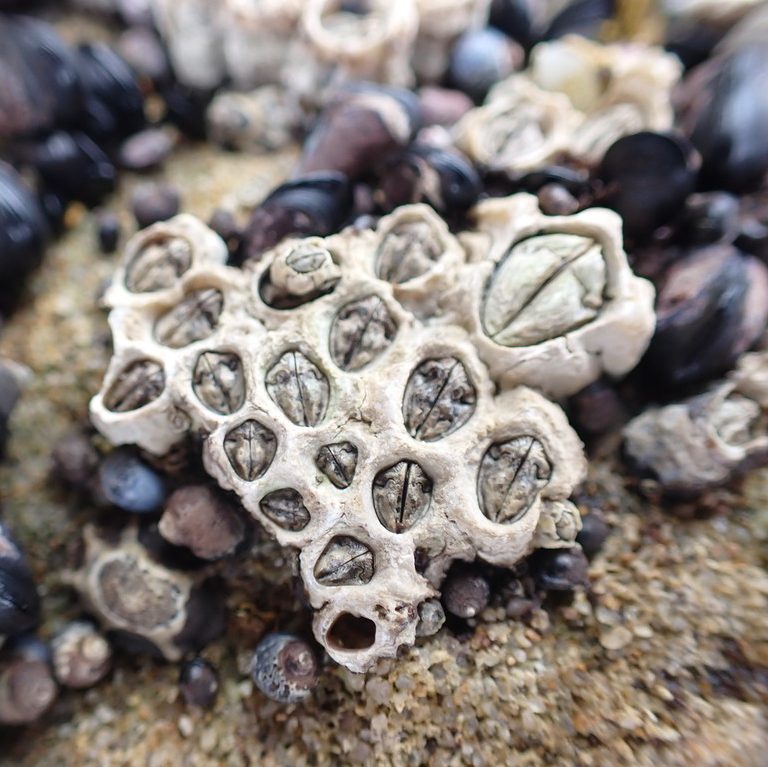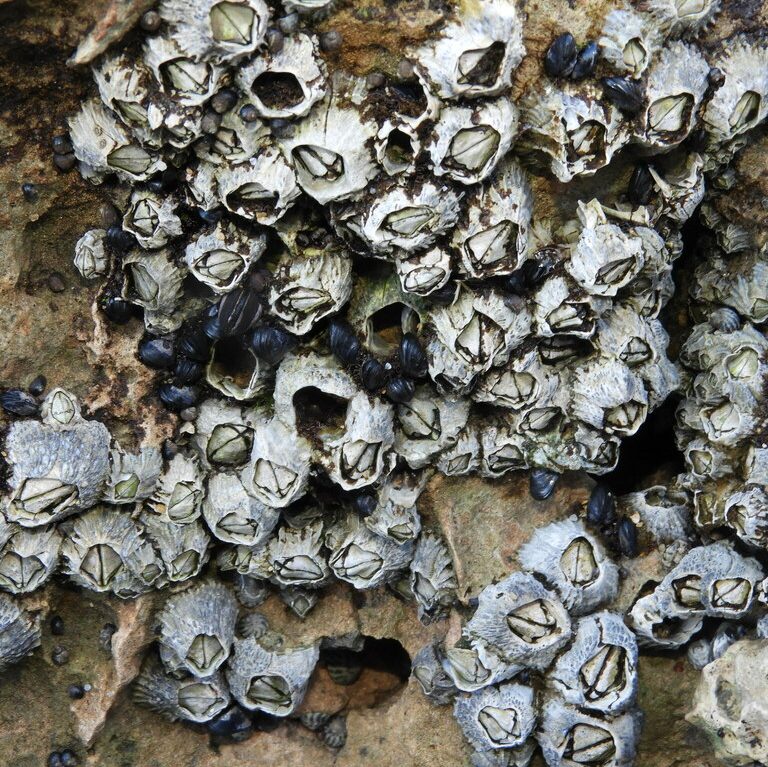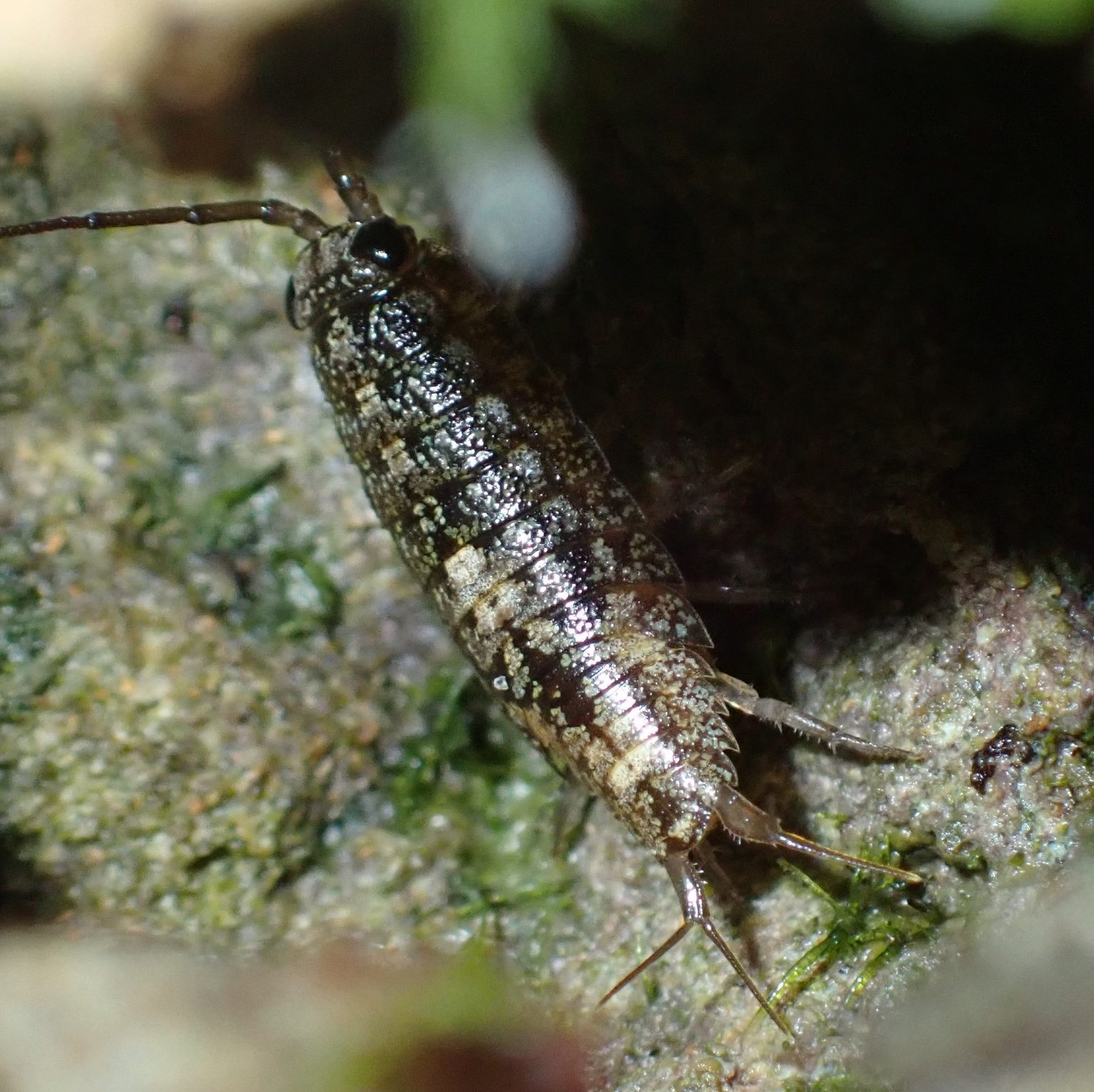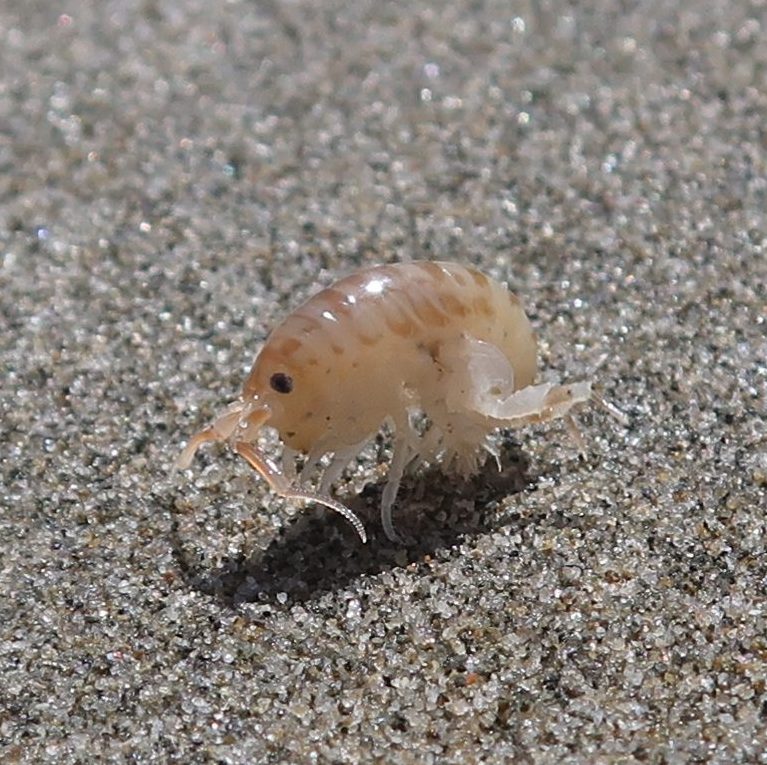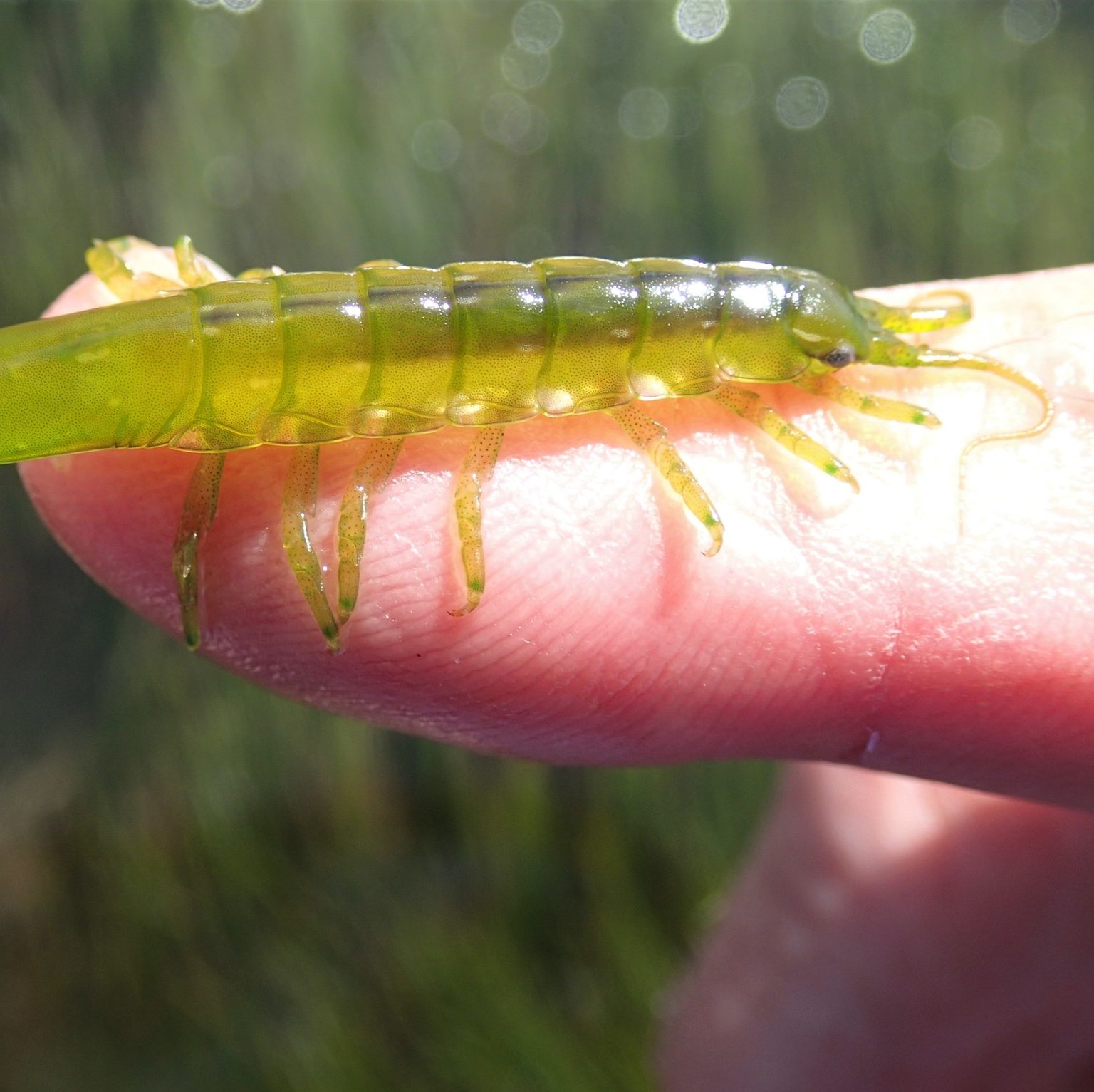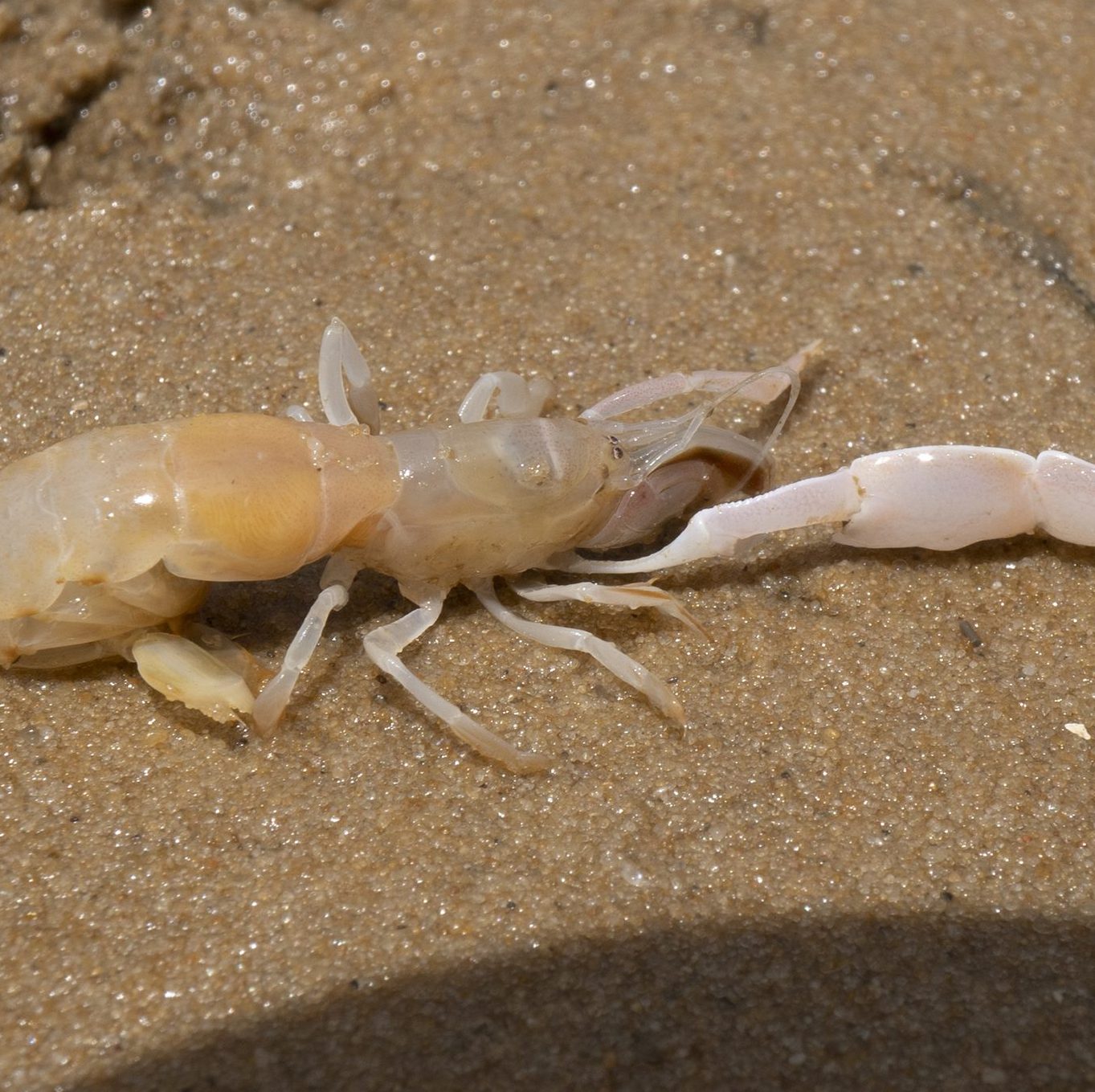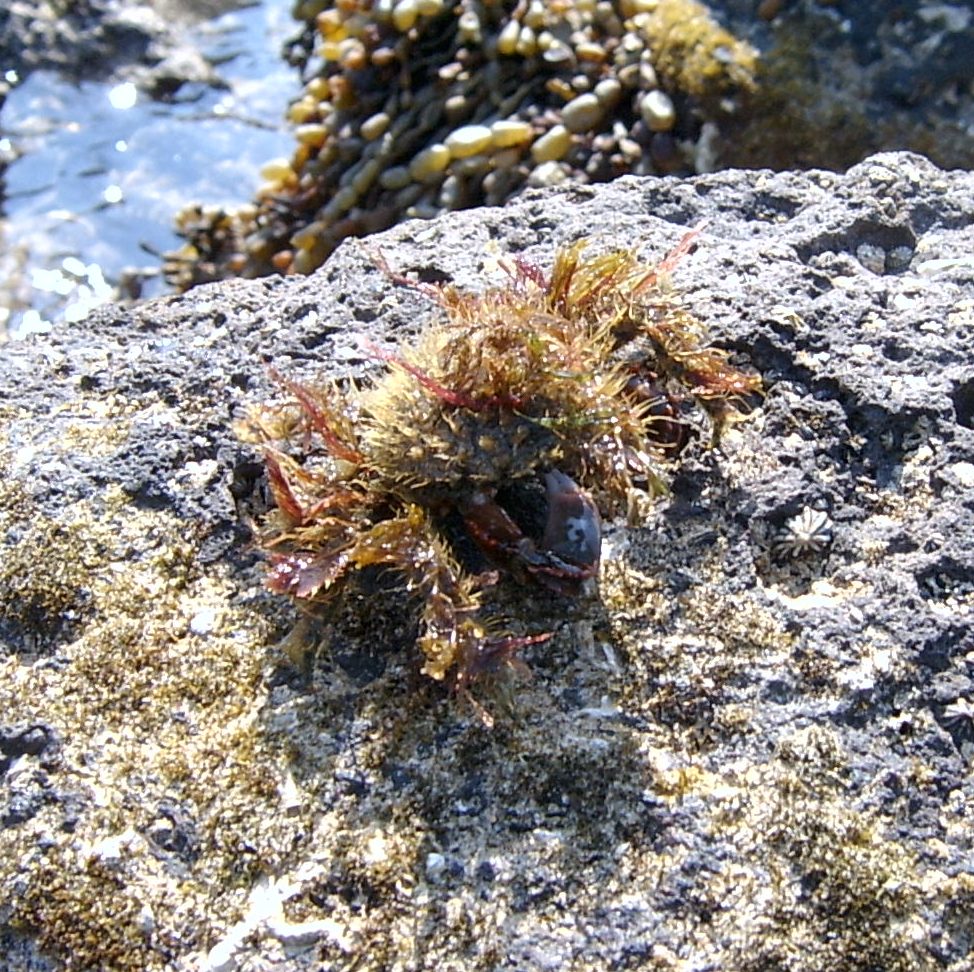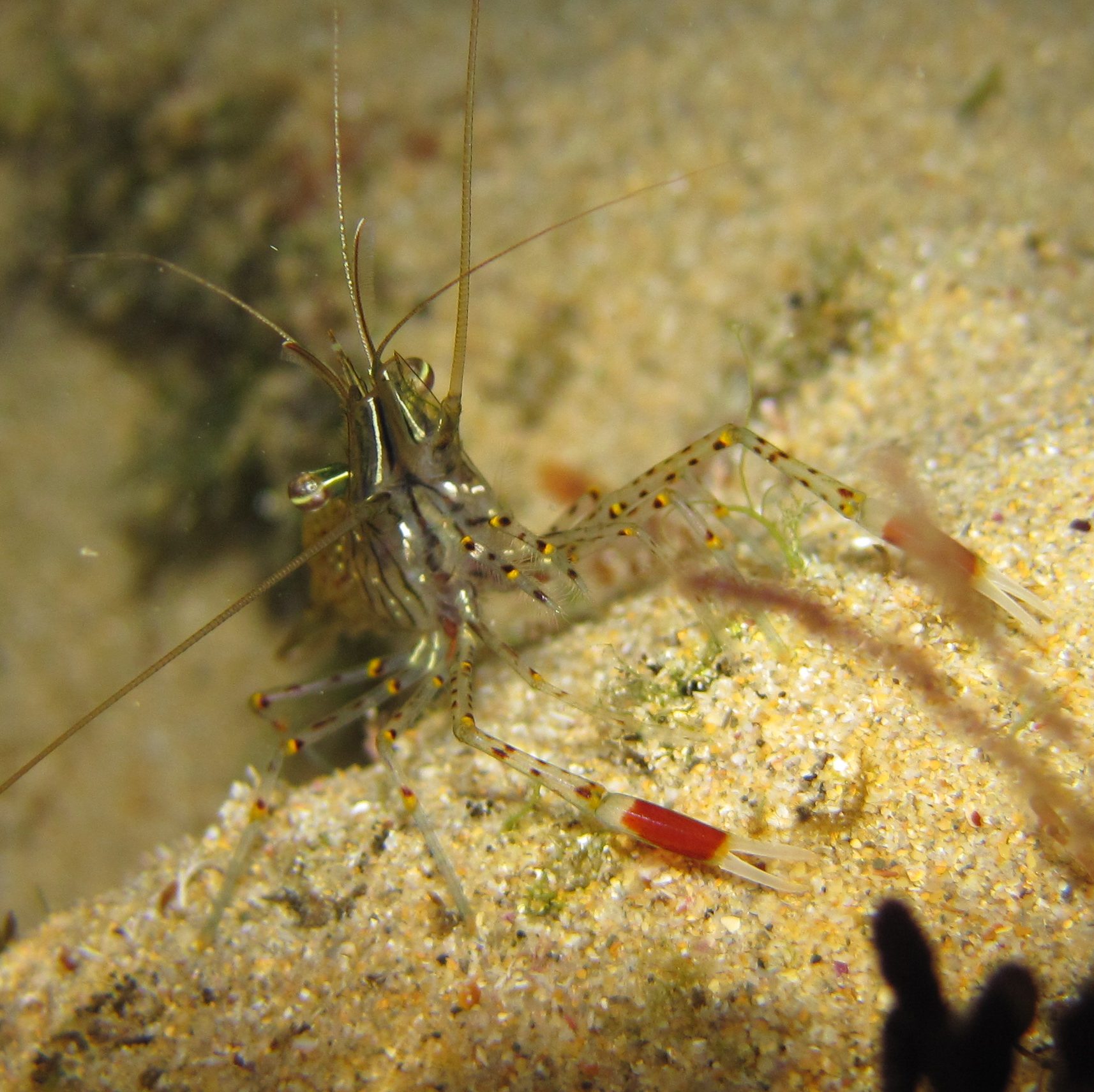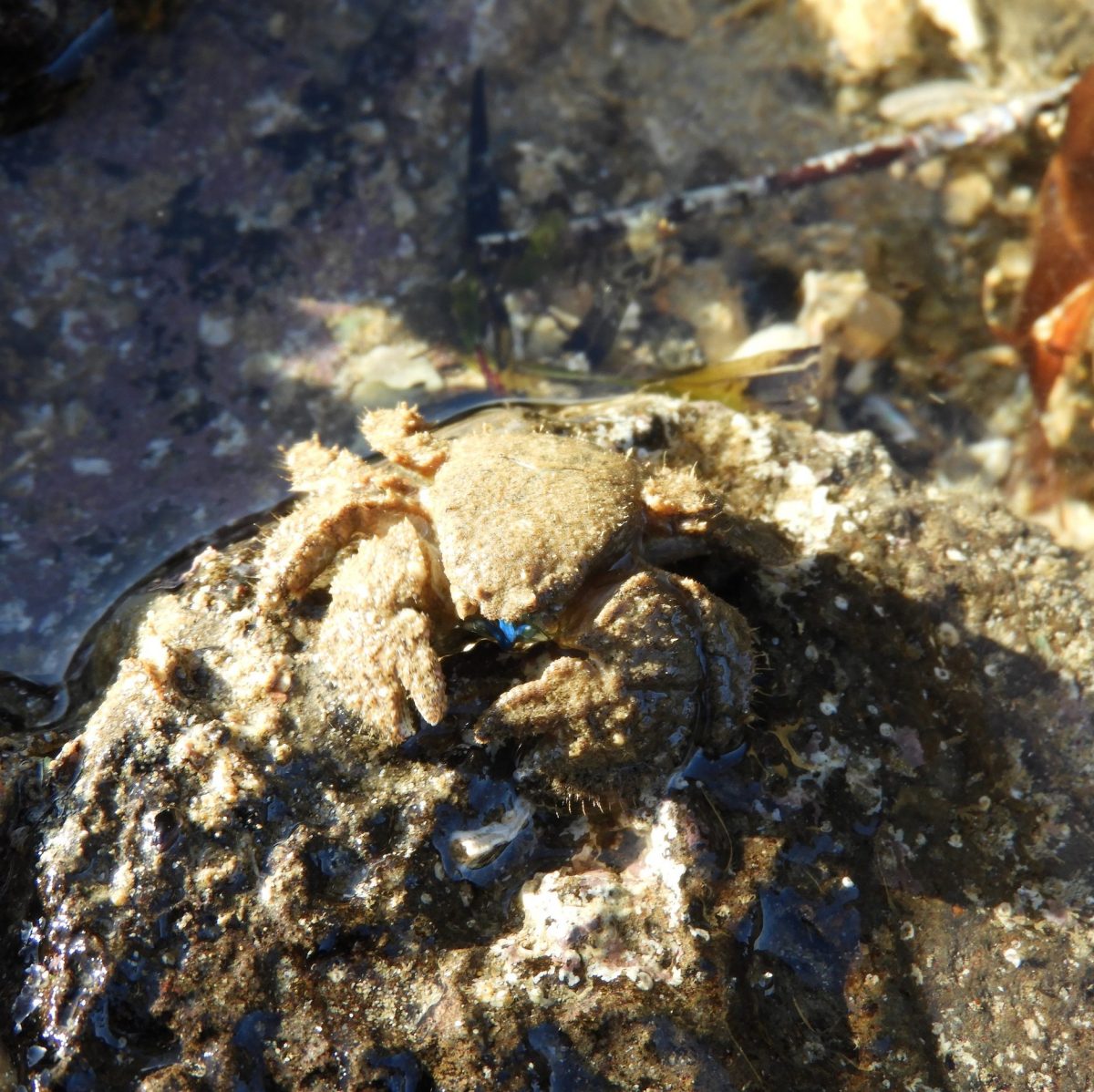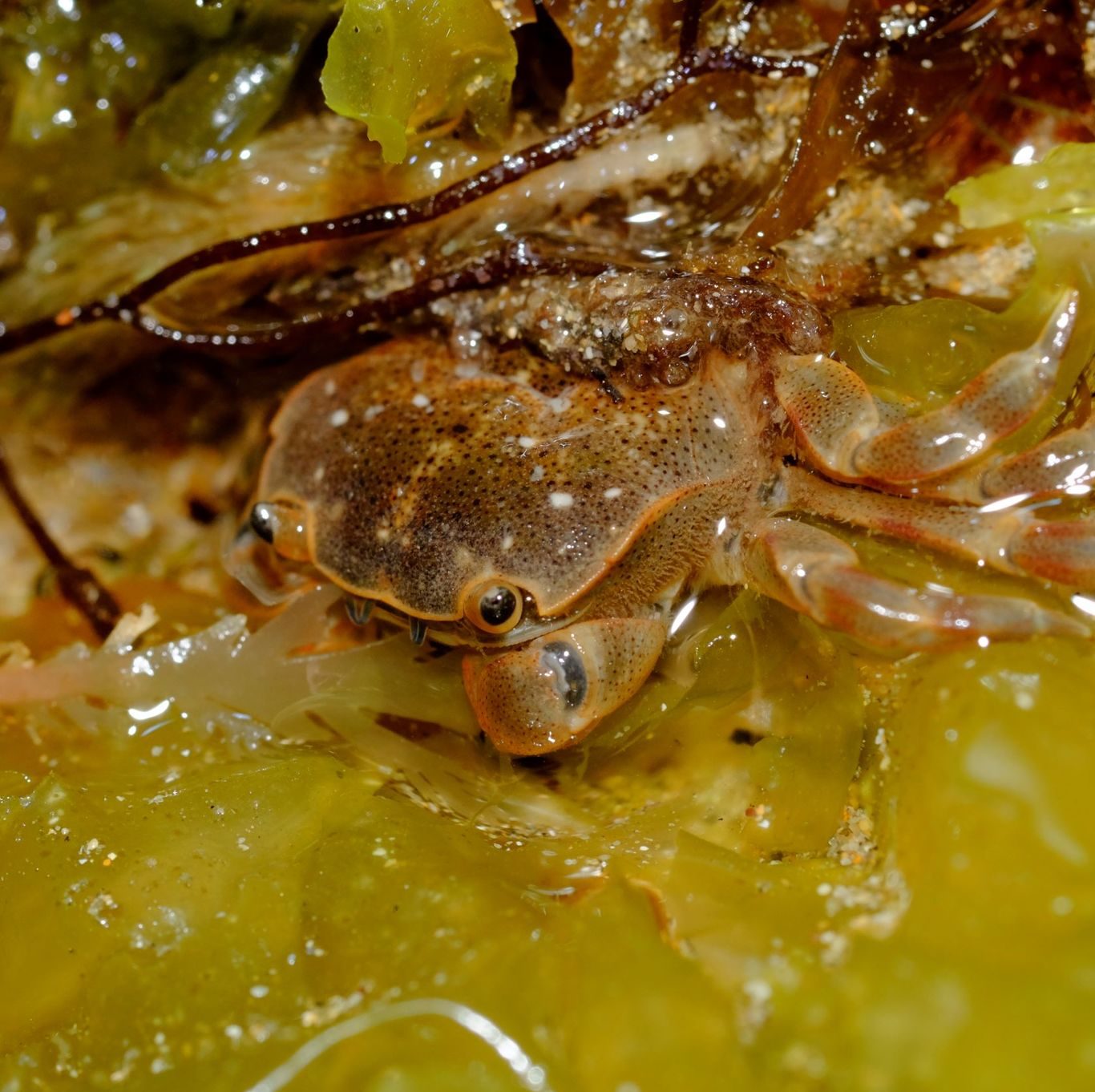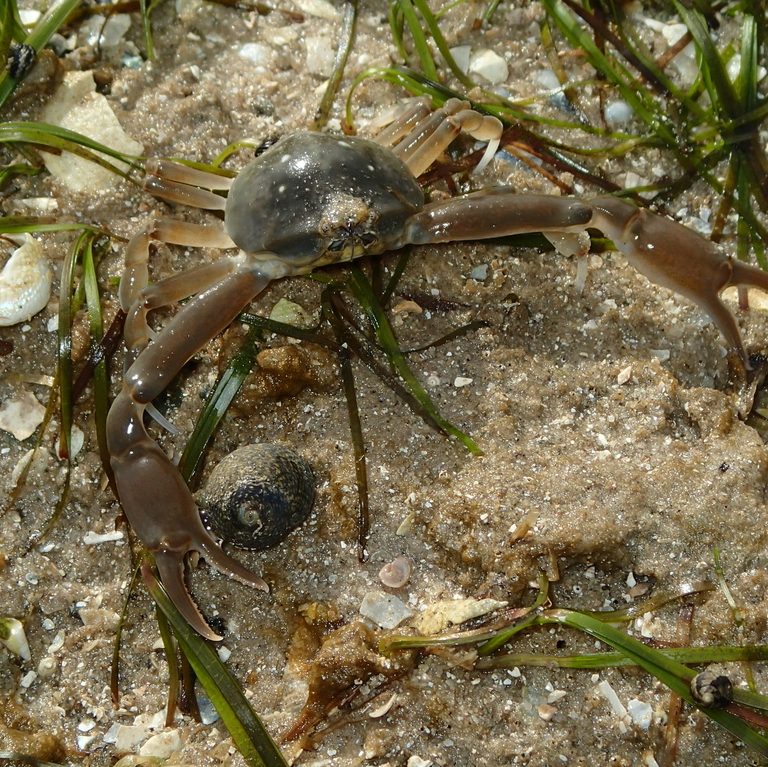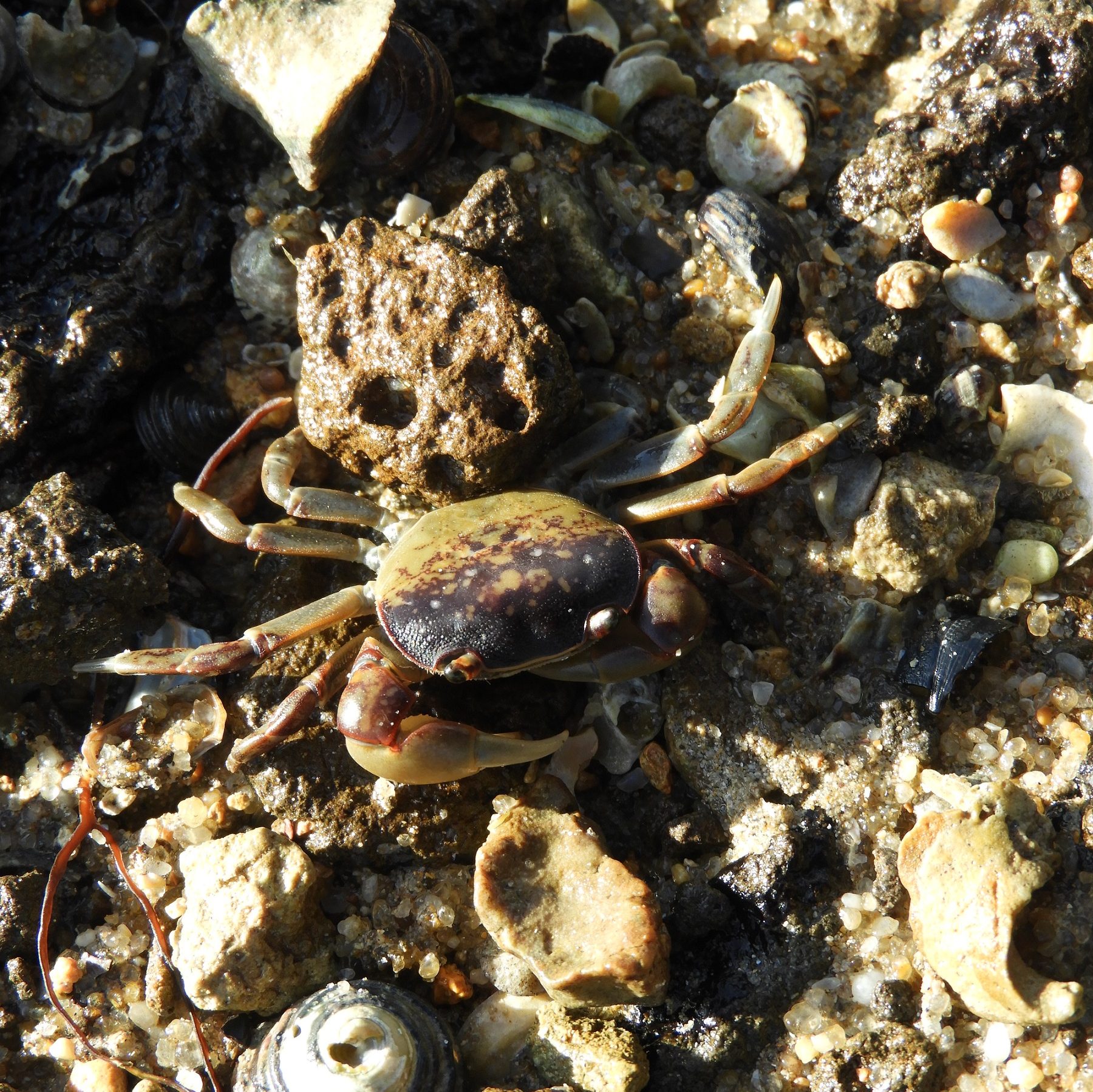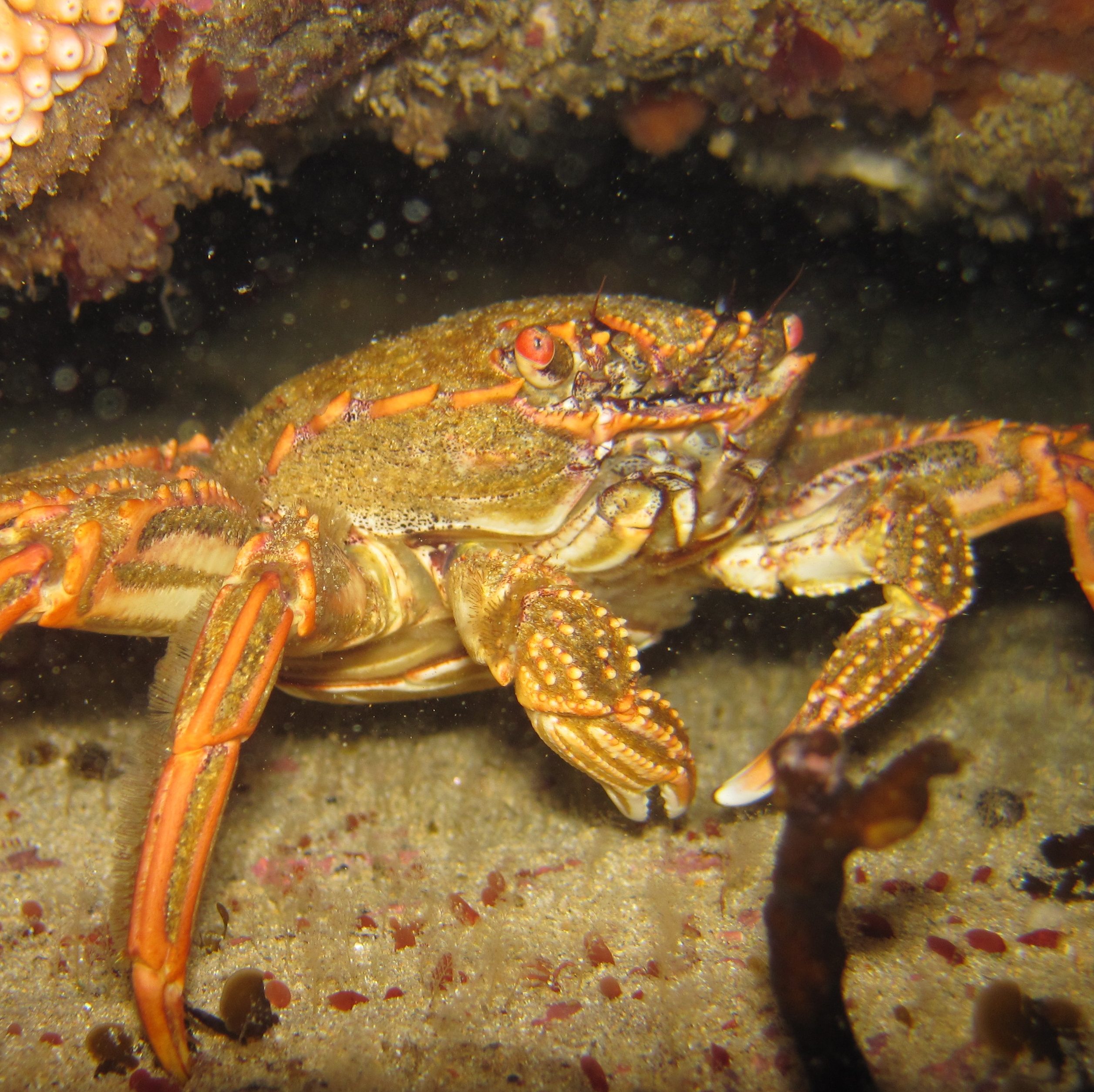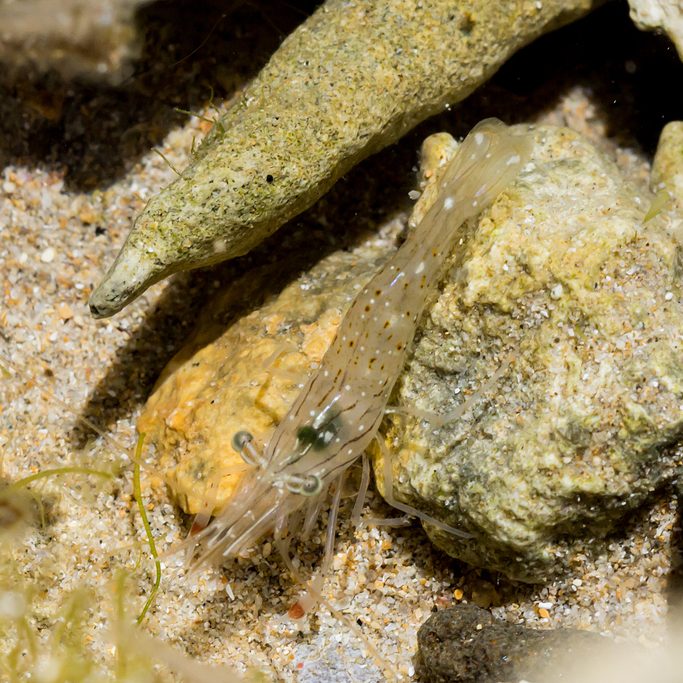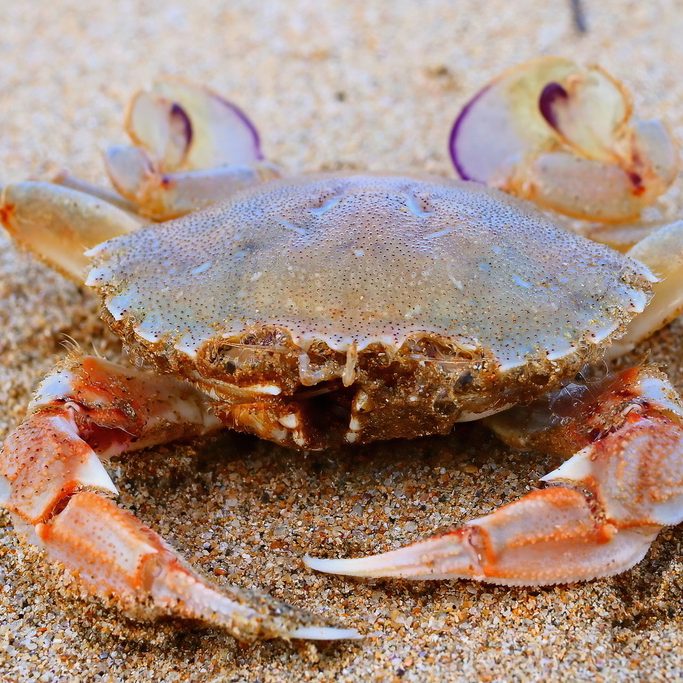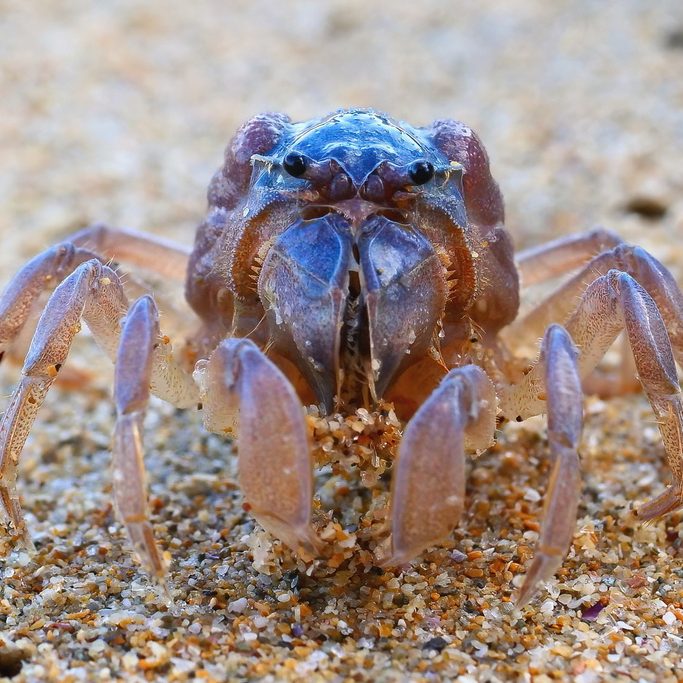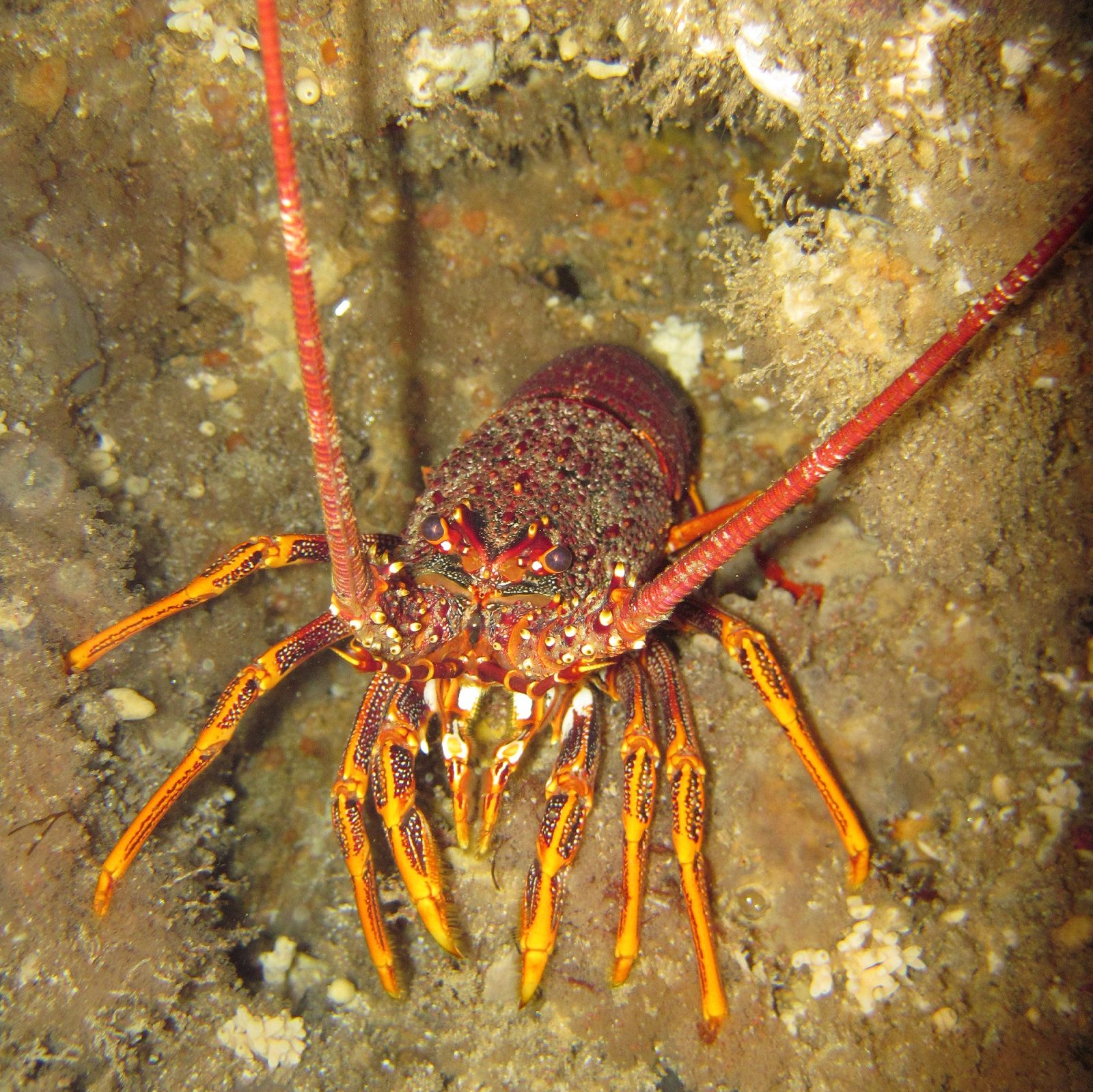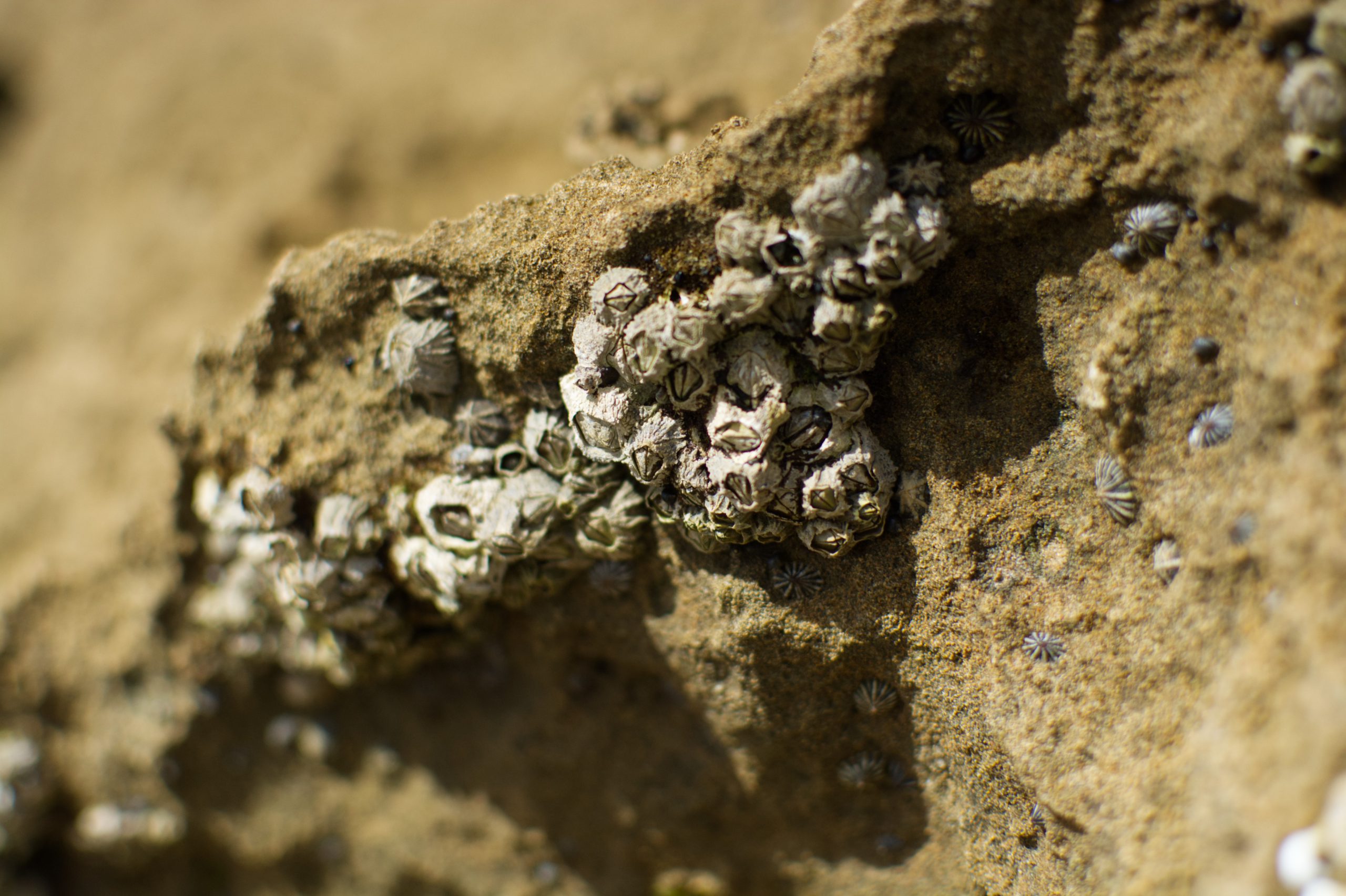
Explore Arthropods (Arthropoda)
Arthropods are amongst the most numerous invertebrate animals with the majority being terrestrial species. All have a segmented body arranged in two equal halves (bilateral symmetry) and numerous jointed limbs.
Arthropods are well represented in marine, coastal, and estuarine environments and many play vital roles as scavengers, recycling organic material in these ecosystems.
Arachnids and Pycnogonids
This group includes a true spider that has evolved to live on the edge of rockpools and another unrelated group of spider like animals called pycnogonids.
Crustaceans
The largest group of marine and estuarine arthropods are the Crustaceans which have been grouped here into several different classes. All crustaceans have gills which they need to keep these moist to allow them to for absorb oxygen from the water.
Crustaceans (Barnacles)
Barnacles are a group of crustaceans that live attached to solid objects. After a short time as larvae floating in the water they cement themselves to the rock and have two plates that can close over to protect them from drying out if in the intertidal area or predators. Barnacles have bodies similar to a shrimp living upside down in their water tight shell and extend their feathery feet known as cirri into the water to capture food.
Crustaceans (Isopods & Amphipods)
Isopods and amphipods are a large group of crustaceans with bodies that are compressed to allow them to squeeze into small spaces and are often found feeding on materials that have washed up on the shoreline. They are mostly scavengers and play important roles in cycling of nutrients and many are important food sources for fish and birds.
Crustaceans (Decapods)
Decapods have ten appendages (including legs, claws, and mouthparts) and are covered in a large jointed shell that contains their head and thorax. This group includes some of the most well known marine creatures like crabs, shrimp, and lobsters. Many of these are also scavengers and feed on the dead remains of other plants and animals.
Photographers
Andrew Allen (Rockpool Shrimp)
Bernie Lingham (Sand Crab, Soldier Crab)
Chris Porter (Honeycomb Barnacle)
Cowirrie (Sand Hoppers)
Gen C (Isopods)
Simon Grove (Sea Spiders)
Mark Rodrigue (Decorator Crab, Estuary Shrimp, Hairy Stone Crab, Goose Barnacle, Purple Mottled Shore Crab, Red Notched Crab, Six-plated Barnacle, Southern Rock Lobster)
Museum Victoria (Pycnogonids)
Nick Shaw (Pebble Crab)
nomennudum (Sea Centipede)
Pete Crowcroft (Notched Shore Crab)
Wayne Martin (Bass Yabby)
